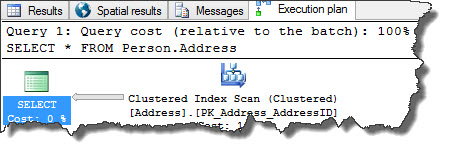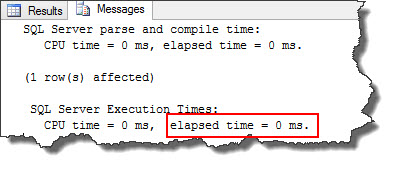Dear Friends,
Yesterday and day before we have covered Clustered Index Seek and Clustered index Scan. In today’s post, let us draw a comparison between SQL Server clustered index scan vs clustered index seek.
Let us first reproduce CI Scan by running SELECT statement on Person.Address table.
USE [AdventureWorks2012] SELECT * FROM Person.Address
And now turn on STATISTICS IO and STATISTICS TIME one by one then run same query.
USE [AdventureWorks2012] SET STATISTICS IO ON SELECT * FROM Person.Address
USE [AdventureWorks2012] SET STATISTICS TIME ON SELECT * FROM Person.Address
We will now run the same query that we used yesterday to get CI seek operator first for illustration.
USE [AdventureWorks2012] SELECT Address.AddressID,Address.AddressLine1,Address.City,Address.PostalCode FROM Person.Address WHERE Address.AddressID = 14918
Time to turn on STATISTICS IO and STATISTICS TIME one by one followed by running same query.
USE [AdventureWorks2012] SET STATISTICS IO ON SELECT Address.AddressID,Address.AddressLine1,Address.City,Address.PostalCode FROM Person.Address WHERE Address.AddressID = 14918
USE [AdventureWorks2012] SET STATISTICS TIME ON SELECT Address.AddressID,Address.AddressLine1,Address.City,Address.PostalCode FROM Person.Address WHERE Address.AddressID = 14918
By looking at the output(s), we can very well understand both logical reads as well as elapsed time is reduced for CI seek operation and is better of the two operators in question.
Note: This is just an illustration and results may vary under different circumstances as per environment.
Happy learning!
Regards,
Kanchan
Like us on FaceBook | Join the fastest growing SQL Server group on FaceBook | Follow me on Twitter | Follow me on FaceBook






